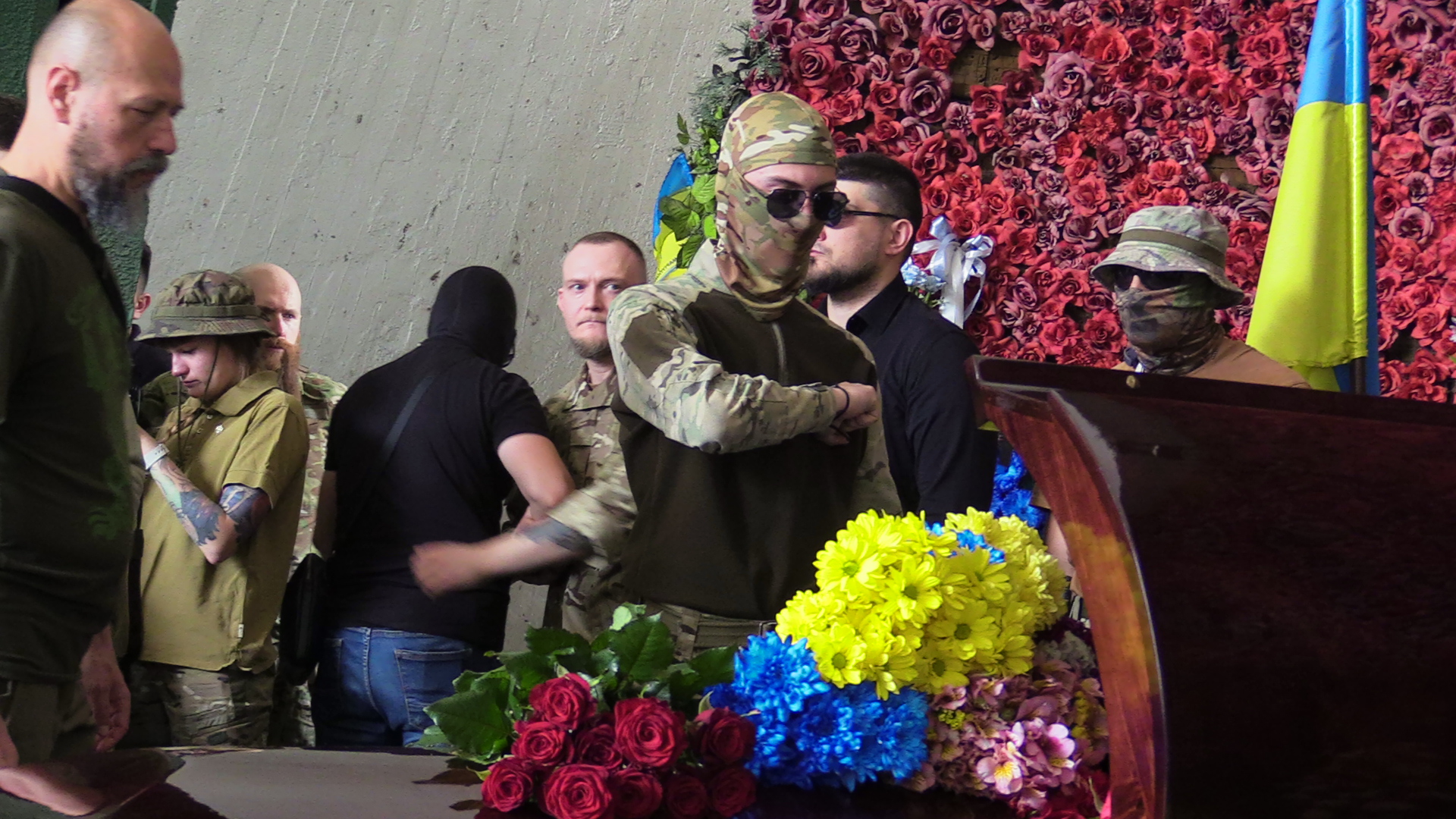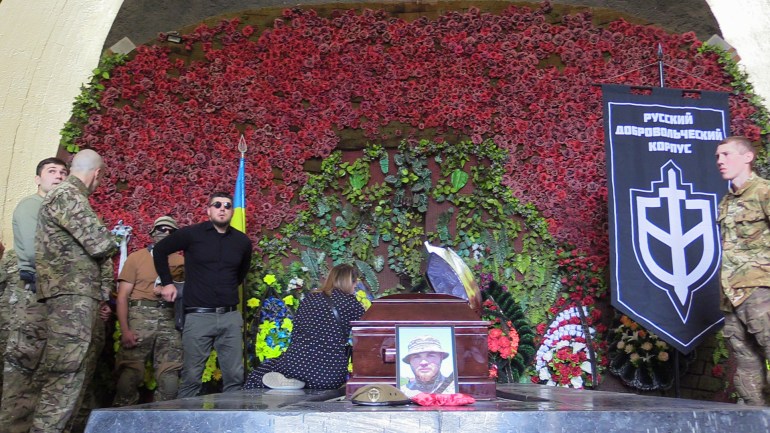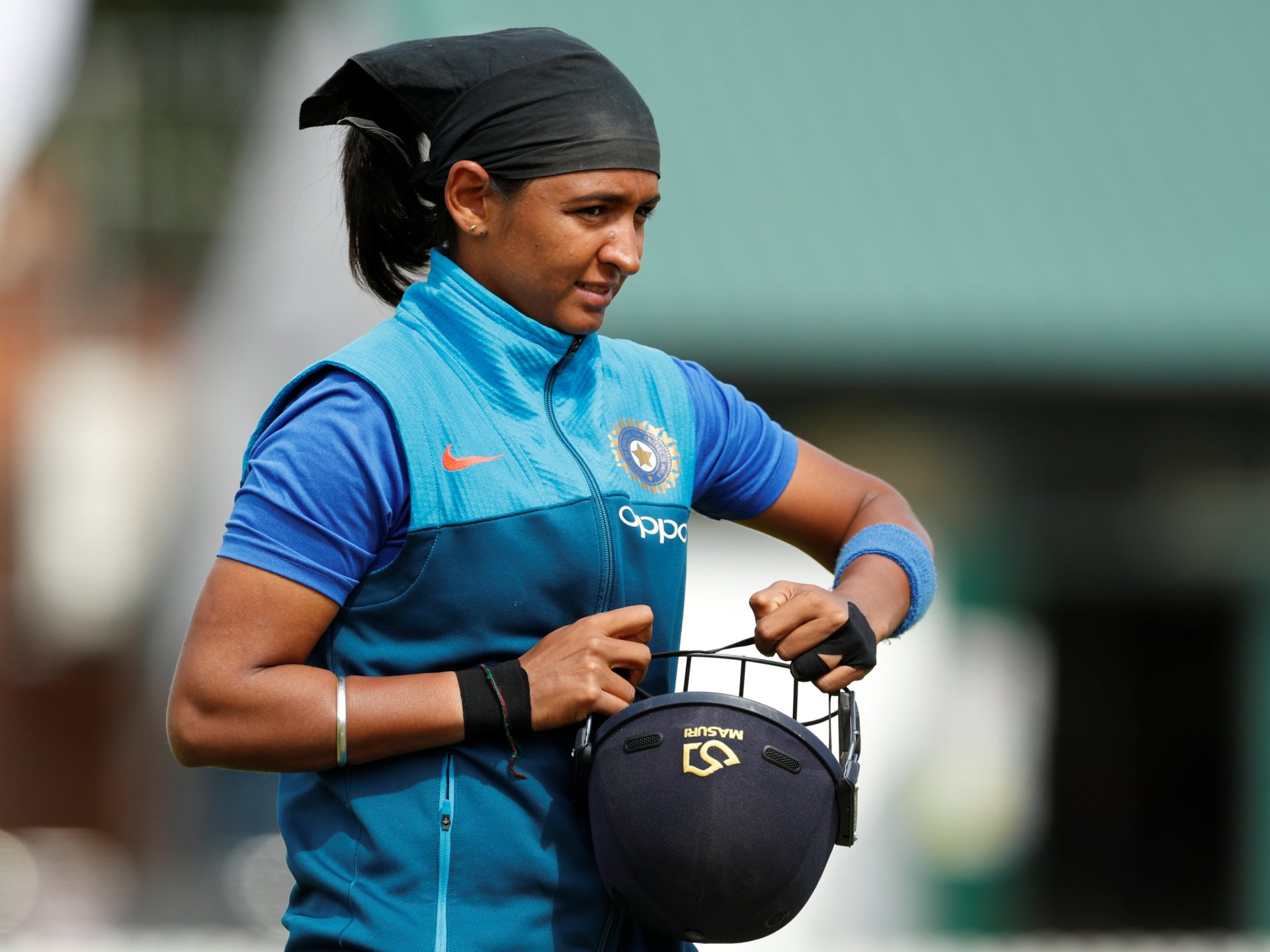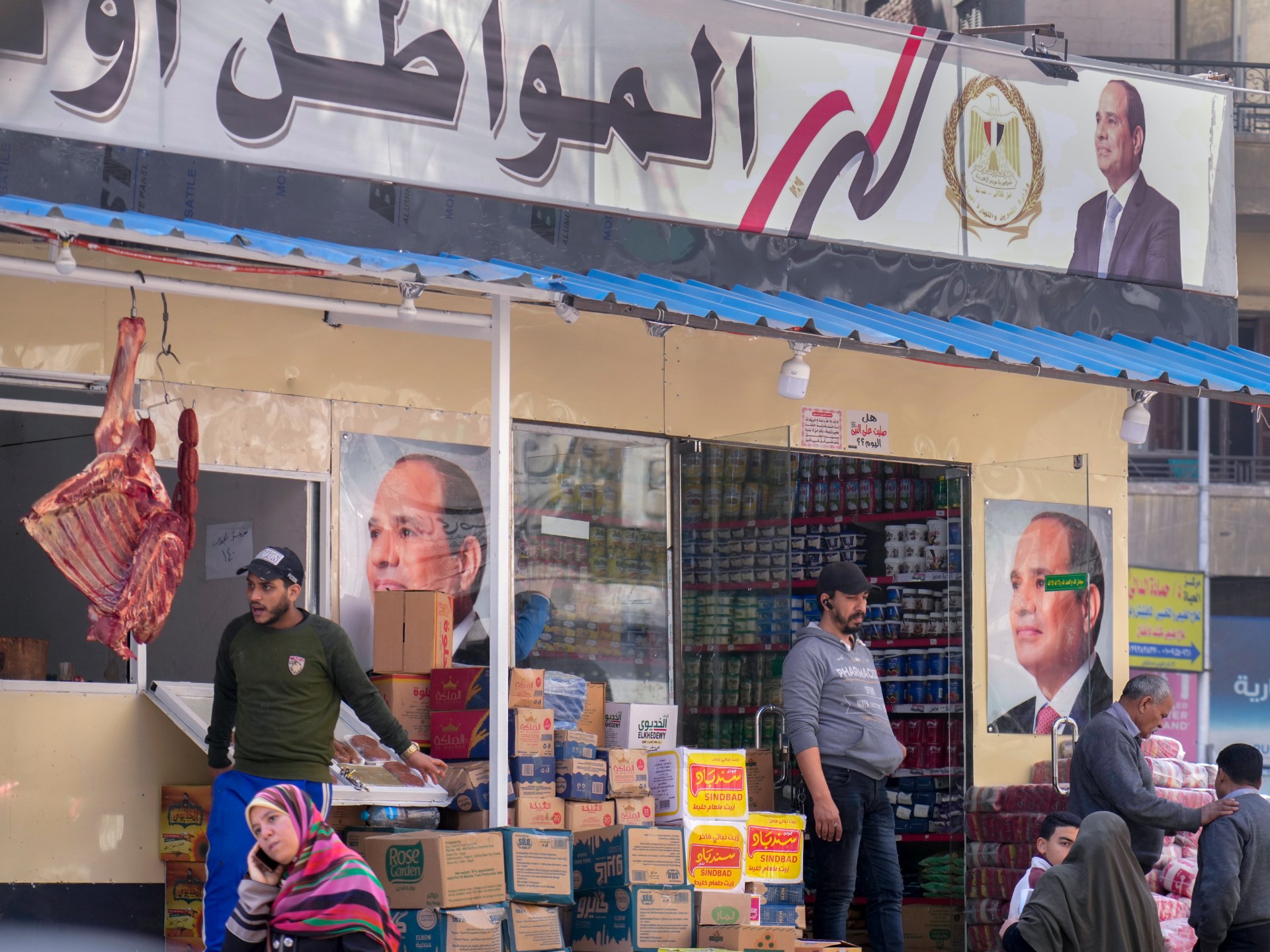
Kyiv, Ukraine- Standing next to the coffin with Daniil Maznik’s body, many of his camouflage-clad, battle-tested brothers and sisters wept.
“He was a brave fighter, a pious Christian, a faithful comrade,” Denis Kapustin, Majnik’s commanding officer, said tearfully during a farewell ceremony at Kiev’s historic Bykov Cemetery last weekend.
Maznik, a bearded and 29-year-old, was killed during one of the boldest and brazen military operations of the ongoing Russia-Ukraine war.
On June 1, he was part of four small military units that went to attack Shebekino, a town of 40,000 in western Russia’s Belgorod region, and capture the village of Novaya Tavolzhanka.
They clashed with border guards and troops and were backed by Ukrainian drone strikes and heavy, indiscriminate artillery fire that included banned cluster munitions, Russian officials claimed.
As they advanced, tens of thousands of civilians fled Belgorod in panic, and Novaya Tavolzhanka briefly became the first and only area in Russia not under Moscow’s control.

Majnik led the seizure of a border checkpoint, hijacked an armored vehicle and captured a soldier before being killed in a shootout on June 3, Kapustin said.
The farewell ceremony, held inside a cavernous funeral parlor, resembled thousands of similar rituals held across Ukraine in the past 16 months.
But some things make it look ominously different.
Some of the stern, somber men in uniform wore carefully matched masks, hats and sunglasses to avoid being recognized.
Neither agreed to be interviewed by Al Jazeera, saying they had been “instructed” not to speak to the media.
And not a single Ukrainian official showed up to pay tribute or lay flowers on the coffin.
Because Maznik, nicknamed Shaiba (Pak), is a Russian citizen and part of the Russian Volunteer Corps (RVC), a small military unit set up by fugitive extremists.
They said they were supported by The Freedom of Russia Legion, made up of Russian prisoners of war who had switched sides, and groups of volunteers from neighboring Poland and Belarus.

In February 2022, the Kremlin planned a victorious blitzkrieg to topple the government of Ukrainian President Volodymyr Zelensky.
In the Kremlin’s words, Russia’s “special military operation” was aimed at “liberating” Ukraine from Zelensky’s “neo-Nazi junta.”
At the time, the idea that the RVC and its allies would bring the war to Russia over the course of three campaigns — March, late May, and early June — seemed improbable.
By that measure, Kiev could have used the operations to trump how weak and feeble Moscow’s war effort is, and how Russian officials have failed to protect border regions despite a hefty defense budget.
But it didn’t happen.
Instead, Kiev should negotiate directly with the Kremlin, considering the RVC to be an independent political force.
“We are monitoring the course of hostilities and once again urge the Moscow government to cease fire in the Belgorod region, immediately start negotiations with the RVC and stop the senseless bloodshed,” Zelensky aide Mykhailo Podoliak tweeted on June 5.
“This is a fight of Russian Goliath against Russian David,” he wrote, “Ukraine does not take part in the conflict.”
Analysts say Ukraine prefers to keep the RVC’s support of intelligence, artillery fire and drone strikes secret – though the information is public.
“Kiev is distancing itself from the RVC’s operations in Russia because officially, Ukraine does not conduct any military attacks on Russian territory,” David Gendelman, an independent military analyst, told Al Jazeera.
“Although everyone understands that no one will allow such operations on their territory during the war, and in fact they are coordinated with Ukrainian intelligence,” he said.
To him, the controversial past of the RVC’s founders is why Ukraine is so reluctant to acknowledge his unit’s support.
“Kiev will distance itself equally from them even if their past is not ultra-precise but anything else – red, white or striped,” he said.
One reason for this is Ukraine’s over-reliance on Western aid; Western countries have repeatedly warned that the advanced weapons they supply can only be used on Ukrainian territory.
But the RVC had at least four tactical vehicles that could withstand explosives and were supplied by the United States and Poland, as well as rifles made in Belgium and the Czech Republic, the Washington Post reported on June 3.
Two days later, Belgium said it objected to their use on Russian territory.
“Belgium and other Europeans have very strict rules about weapons,” Prime Minister Alexandre de Croix told Le Soir newspaper. “We asked the Ukrainians to explain the situation.”
Far-right ideology
Maznik, the slain RVC fighter, spent years in the Russian military — and used his experience to “transform a small band of desperate Russian boys into a full-fledged military unit,” Kapustin said in his eulogy.
“Shayba gave six years of his life to the Russian army, knew all the injustice and rot from the inside of this machine, and passionately fought against it by our side,” Kapustin said.
Russian media claimed Maznik was convicted of fraud in Moscow and fled to Ukraine, leaving behind his wife and children.
His commander Kapustin, a 39-year-old with bulging muscles and several tattoos who prefers to be known as White Rex, is much more forthright.
Kapustin was born in Russia but spent his early years in Germany, where he says he was a “street boy, skinhead, with a broken face”.
He participated in and organized bare-knuckle boxing fights, and German police identified him as the “most influential” far-right activist in Europe.
He returned to Russia and then fled to Ukraine in 2017. Germany has reportedly revoked his residence permit.
In Kiev, he opened The White Rex clothing store that sold clothing with “Slavic solar symbols” similar to the swastika and other symbols used in Nazi Germany.
These days, Kapustin is wanted in Russia for allegedly orchestrating a failed assassination attempt on pro-Kremlin tycoon Konstantin Malofeev, whose Zargrad television channel is one of the pro-war media outlets.
Russian authorities have blacklisted the RVC as a “terrorist organization” and have arrested several who tried to join it.
Earlier this month, Moscow police conducted three dozen searches of alleged supporters of the RVC, the SOTA news website reported.
Kapustin stoked the fire by saying that the RVC wanted to topple the government of Russian President Vladimir Putin.
“The collapse of Russia will allow us to return home,” he told a news conference in October. “We will facilitate the complete and utter breakdown of the Russian political order.”
His words and actions could become perfect fodder for Russia’s vocal supporters.
“I think it would be a sin [in Russia] Not using the completely far-right, radical background of the creators of the RVC,” Vyacheslav Likhachev, a Kiev-based expert on far-right and ultra-nationalist groups, told Al Jazeera.
However, pro-war Russian commentators chose not to play this card – as the success of the RVC and its allies only underscored how ill-prepared Moscow’s armed forces and regional authorities were to deal with their incursions.
“Perhaps, this is related to the disinterest of Russian propagandists that groups of Russian citizens do not simply wage war against them. [the Kremlin] As part of the Ukrainian Armed Forces, but very successful in conducting independent operations on Russian territory,” Likhachev said.
Source link




